Attending MRS Spring 2025 @Seattle (Kim)
Hi everyone! I’m Kim, the M2 student. From April 7 to 11, I had the opportunity to attend the MRS Spring 2025 Meeting & Exhibit held in Seattle, USA, and gave an oral presentation on my current research.
The MRS Spring Meeting, held at the Seattle Convention Center for this spring season, is one of the major international conferences in the field of materials science. It covers a broad range of topics across the entire field, from fundamental studies to applied technologies. With hundreds of presentations throughout the week, it was a great opportunity to learn about the latest research and ongoing developments.
Venue ↓
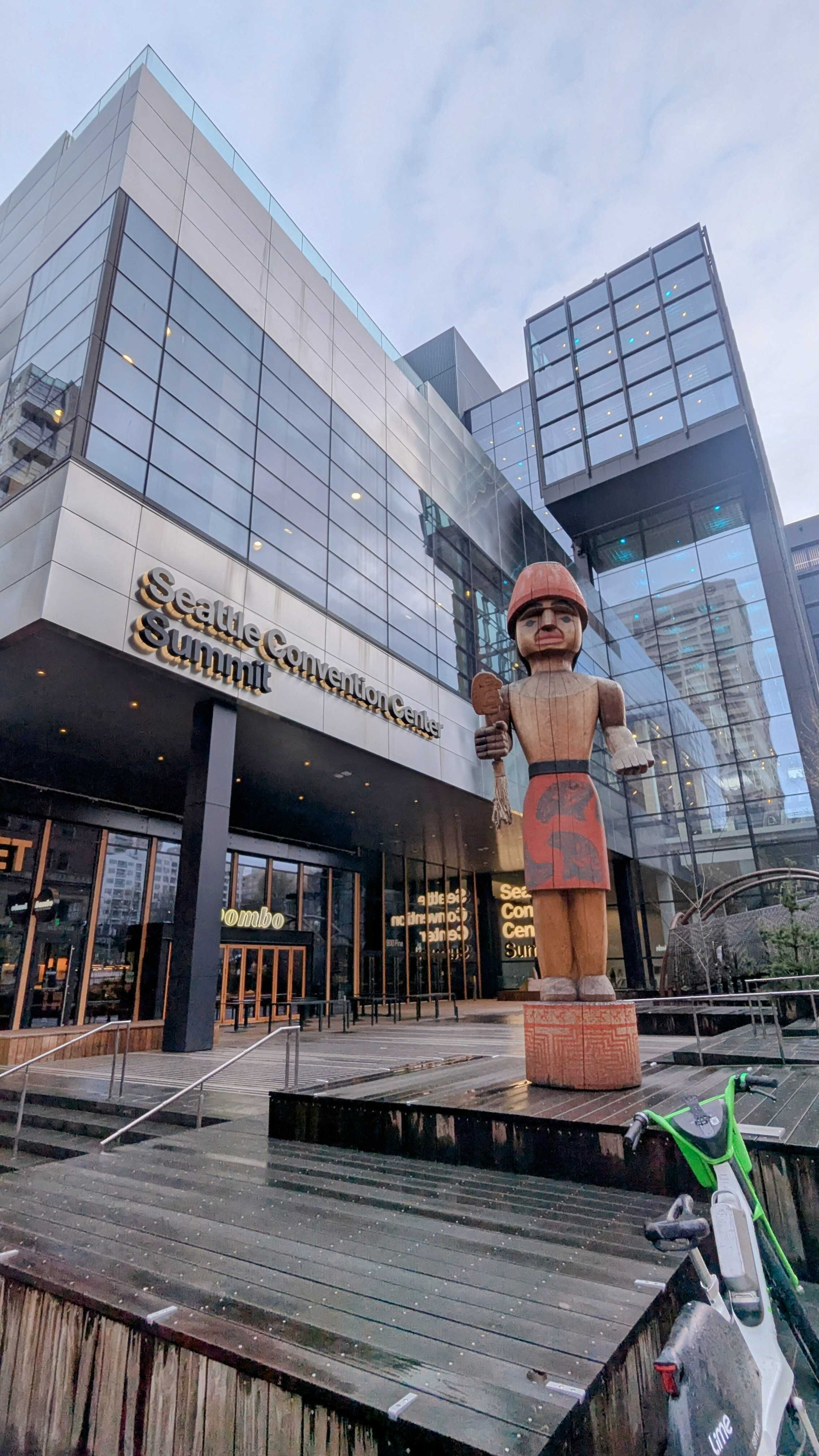
This was actually the first scientific conference I’ve ever attended in my life—apart from the science fair I joined back in high school. Compared to that, the scale of MRS was on a whole different level. It was a bit overwhelming at first, but also really exciting to be surrounded by so many researchers working at the forefront of materials science. I’m truly grateful to Prof. Takamura for giving me the opportunity to experience this.
My oral presentation was part of a symposium focused on Mixed Ionic Electronic Conductors (MIEC). Interestingly—and a bit unexpectedly—almost everyone else in the session was working on organic MIEC (OMIEC), which typically involves polymers, while only a few, including my professor and myself, were presenting on ceramic MIEC. That made it a bit of a challenge to get the audience to fully follow and connect with my research. But thanks to Prof. Takamura’s help in refining and practicing my presentation, I was able to deliver the message clearly. Even though my topic was outside their usual focus, the audience appeared to understand and appreciate the significance of the work.
Me, giving oral presentation ↓
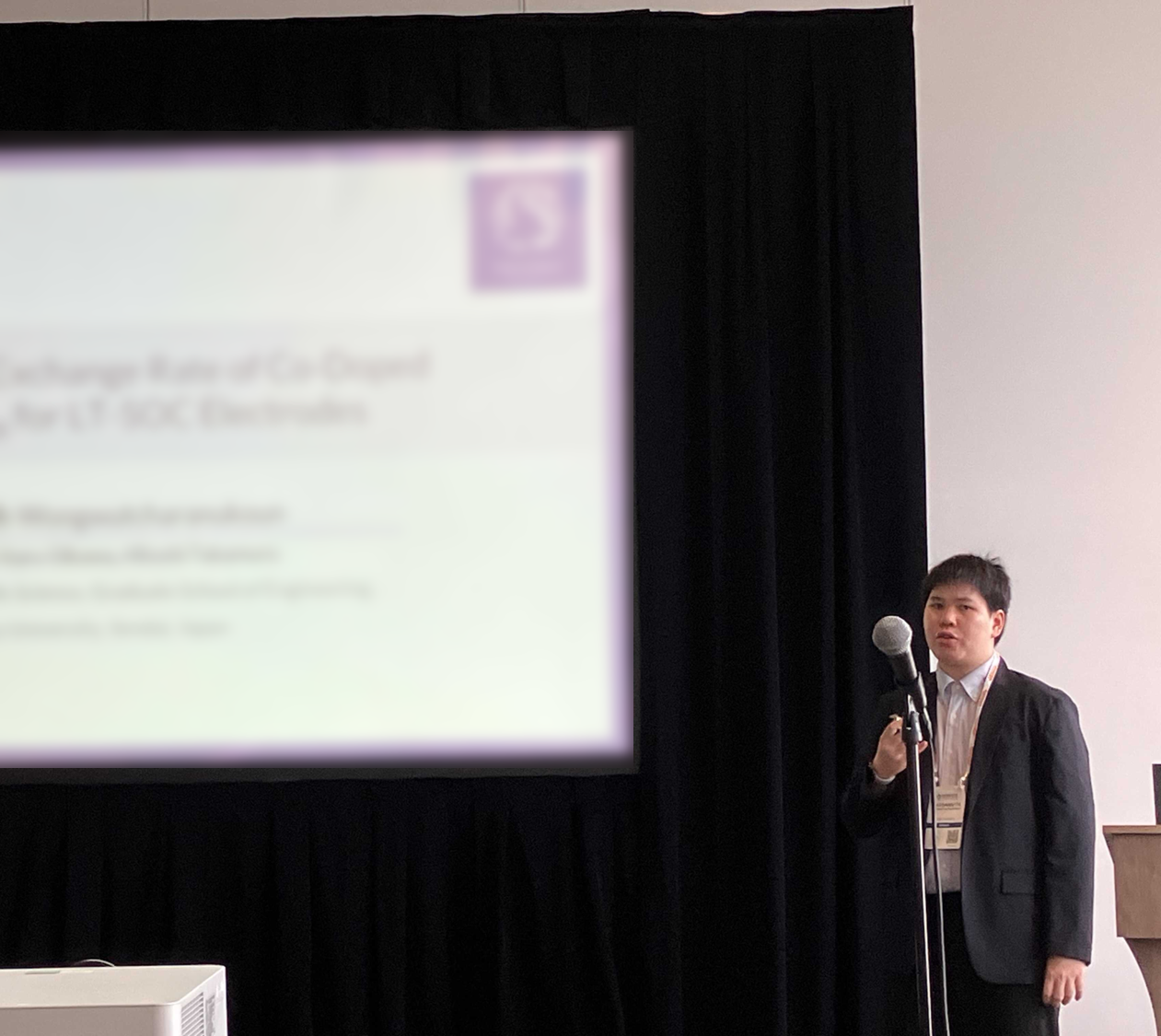
Apart from giving my own presentation, I also attended many talks throughout the week. I mainly focused on sessions related to solid oxide cell development, which is close to my research, but I also joined various other symposia on topics like machine learning and AI in materials science, halide perovskites for solar cells, etc. The most memorable moment, though, was the chance to attend a lecture by Prof. David Baker, who was awarded the Nobel Prize in Chemistry just last year. Listening to how he approaches problems and structures his thinking was incredibly inspiring—I was able to learn how a Nobel-level scientist analyzes complex issues and develops solutions with a clear and creative mindset.
Seattle is known as the home and origin of the famous Starbucks coffee, so it was a nice touch that they served Starbucks coffee for free during the coffee breaks. These breaks happened twice a day and were a great chance to refresh and casually interact with other participants. While I didn’t talk to many people, I did have a few small conversations with researchers from different countries, which made the experience feel more connected and global.
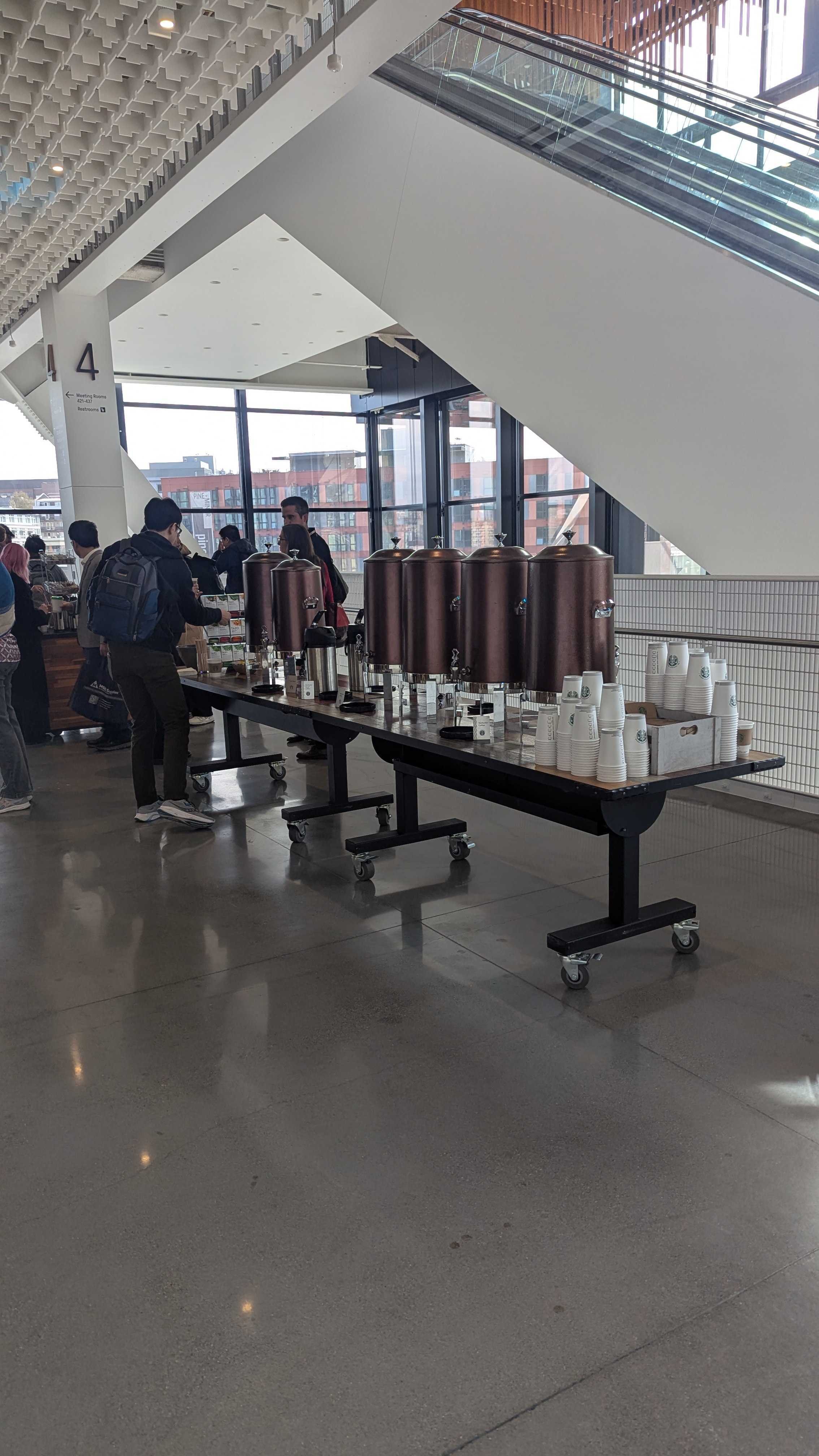
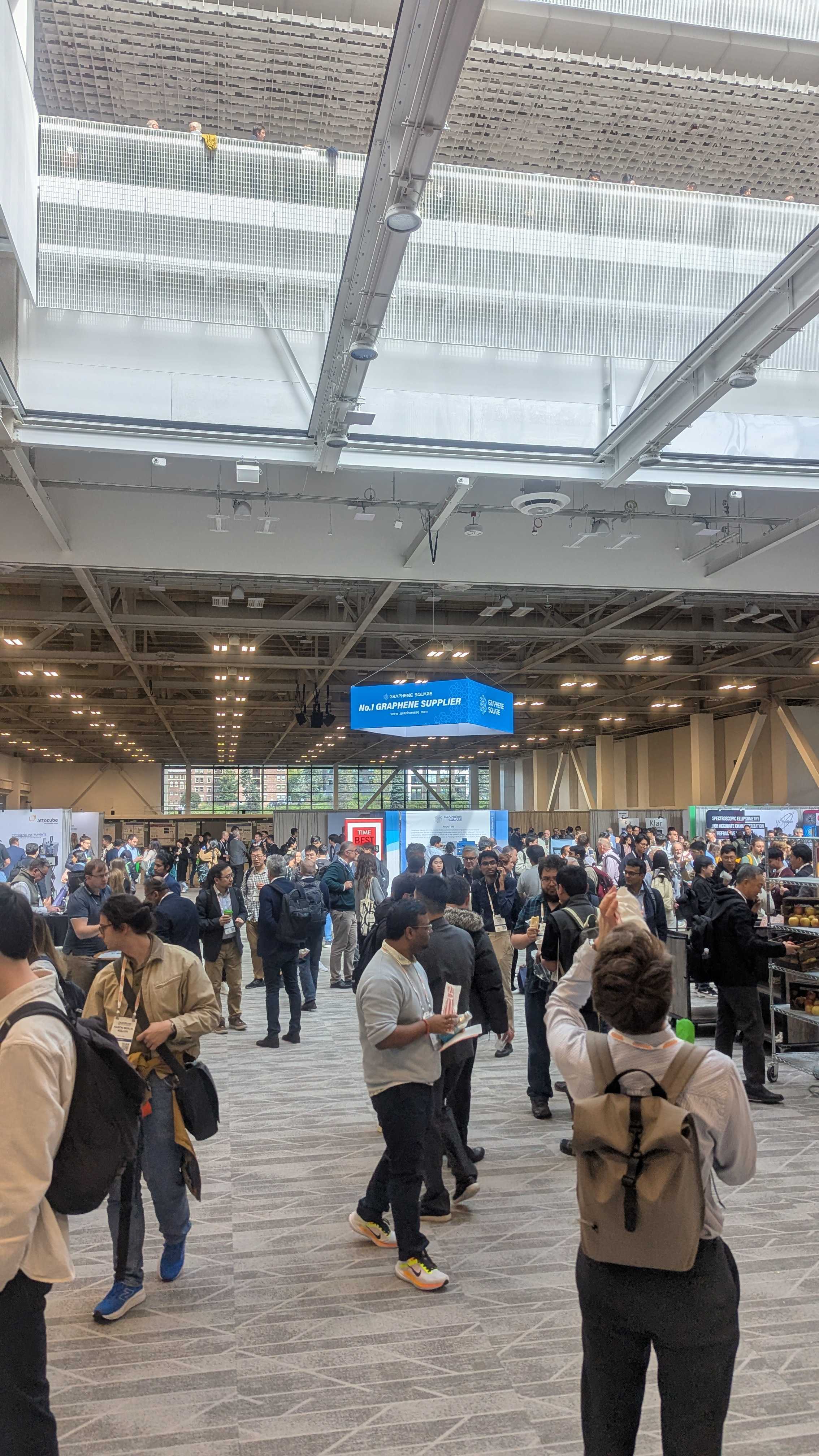
↑ "Starbucks" coffee break ↑ Exhibition hall
Sightseeing & Food
During the conference week, I also had some time to walk around and explore parts of Seattle, especially the waterfront area. I visited the pier district, which had a really nice view of the bay with ferries and boats coming and going—it felt calm but lively at the same time. One of the highlights was Pike Place Market, a well-known landmark of the city. It was full of energy with people browsing, fish vendors shouting, and lots of small shops selling local food and handmade goods.


↑ Pier district ↑ Pike Place Market
I also had the chance to try some Western dishes that I don’t usually come across in Asia. One that stood out was eggs Benedict, which I ordered at a café near the hotel.To be honest, I had the impression that Western food might not taste that good, but this dish turned out to be better than I expected.
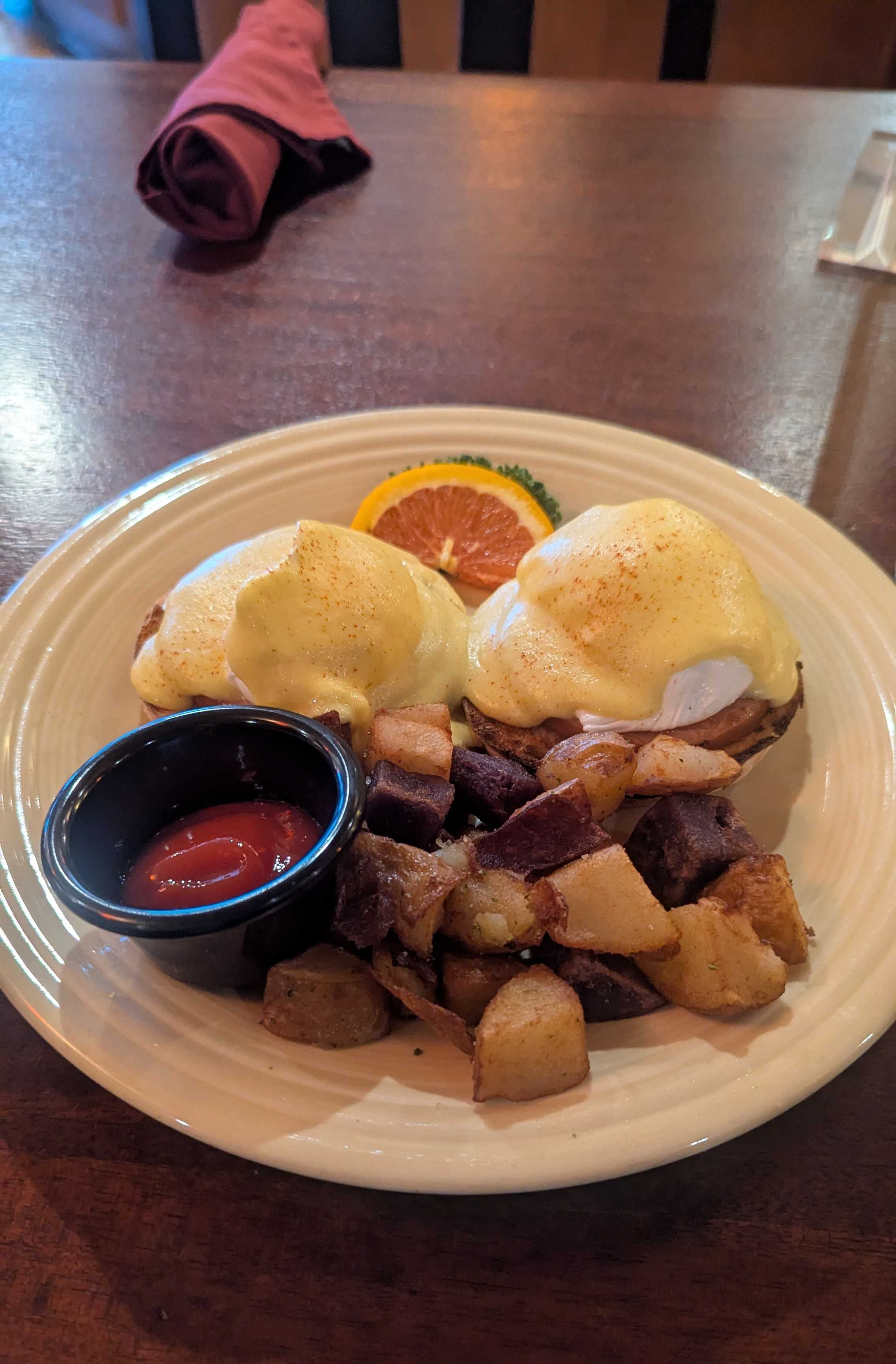
On one of the last days of the event, I had the opportunity to have dinner with Prof. Takamura at a nice restaurant. It was a more upscale place compared to where I usually eat, and I’m very thankful to Prof. Takamura for kindly treating me to the meal. I ordered a steak, and it was excellent.
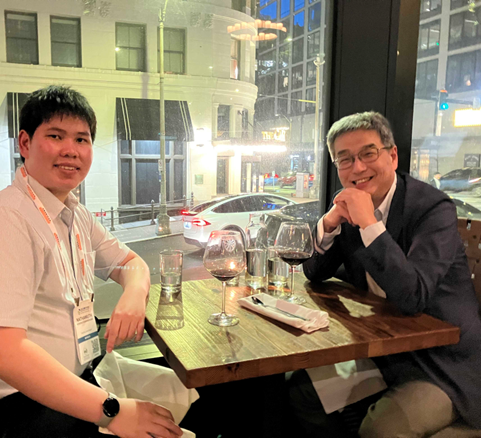
Closing Remarks
Through this conference, I was able to learn many things across a wide range of topics in materials science, including recent advancements that haven’t been reported anywhere yet. It gave me a clearer picture of how researchers from around the world approach their work at the international level. I found it both inspiring and motivating, and it sparked several ideas that I hope to apply to my own research onward. I’ll do my best to adapt what I’ve learned and make the most of it in the future.
I’d like to thank Prof. Takamura once again for giving me the chance to have this unforgettable experience.
- コメントを投稿するにはログインしてください